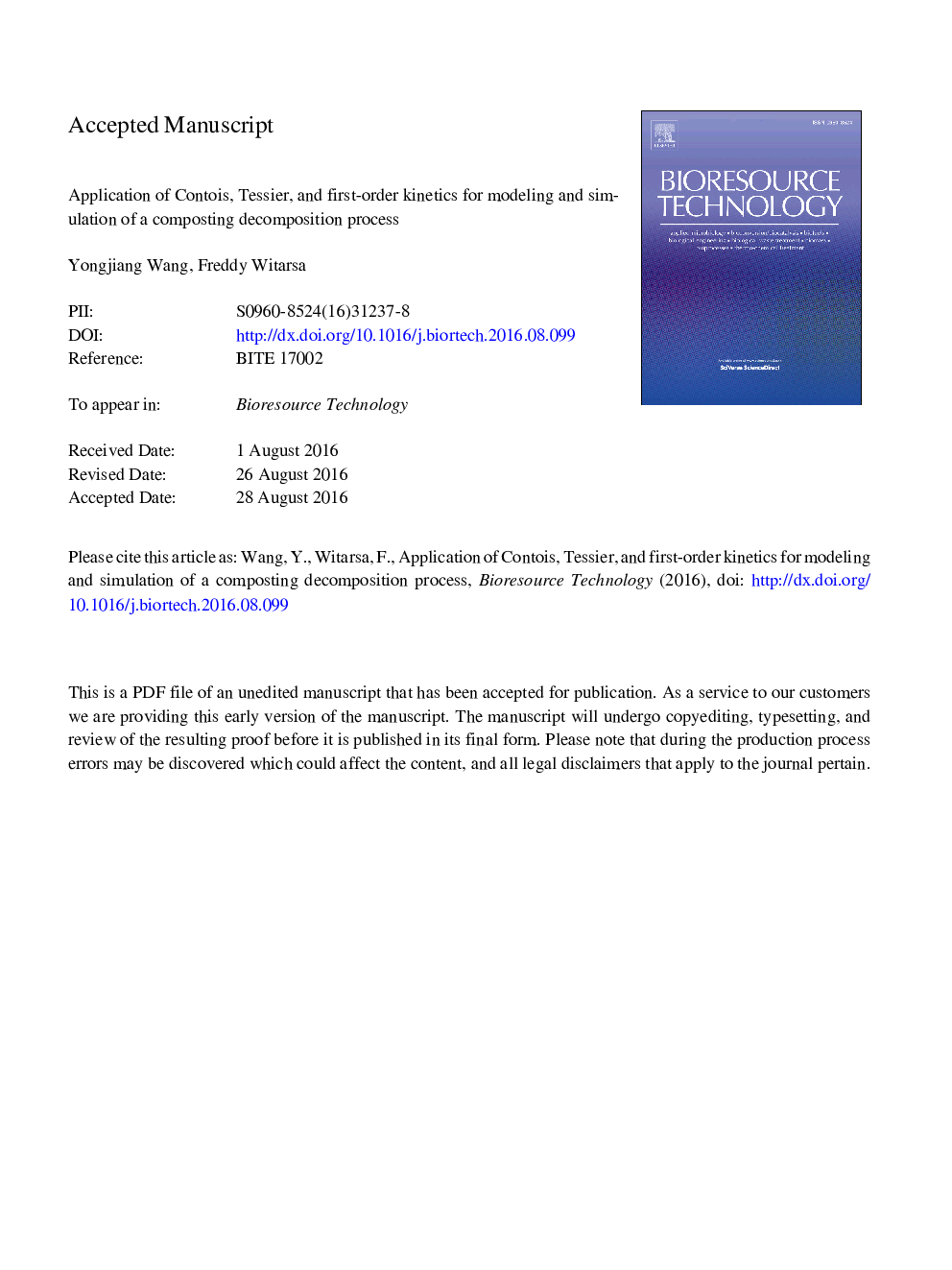| Article ID | Journal | Published Year | Pages | File Type |
|---|---|---|---|---|
| 7069828 | Bioresource Technology | 2016 | 37 Pages |
Abstract
An integrated model was developed by associating separate degradation kinetics for an array of degradations during a decomposition process, which was considered as a novelty of this study. The raw composting material was divided into soluble, hemi-/cellulose, lignin, NBVS, ash, water, and free air-space. Considering their specific capabilities of expressing certain degradation phenomenon, Contois, Tessier (an extension to Monod kinetic), and first-order kinetics were employed to calculate the biochemical rates. It was found that the degradation of soluble substrate was relatively faster which could reach a maximum rate of about 0.4 per hour. The hydrolysis of lignin was rate-limiting with a maximum rate of about 0.04 per hour. The dry-based peak concentrations of soluble, hemi-/cellulose and lignin degraders were about 0.9, 0.2 and 0.3 kg mâ3, respectively. Model developed, as a platform, allows degradation simulation of composting material that could be separated into the different components used in this study.
Keywords
Related Topics
Physical Sciences and Engineering
Chemical Engineering
Process Chemistry and Technology
Authors
Yongjiang Wang, Freddy Witarsa,
